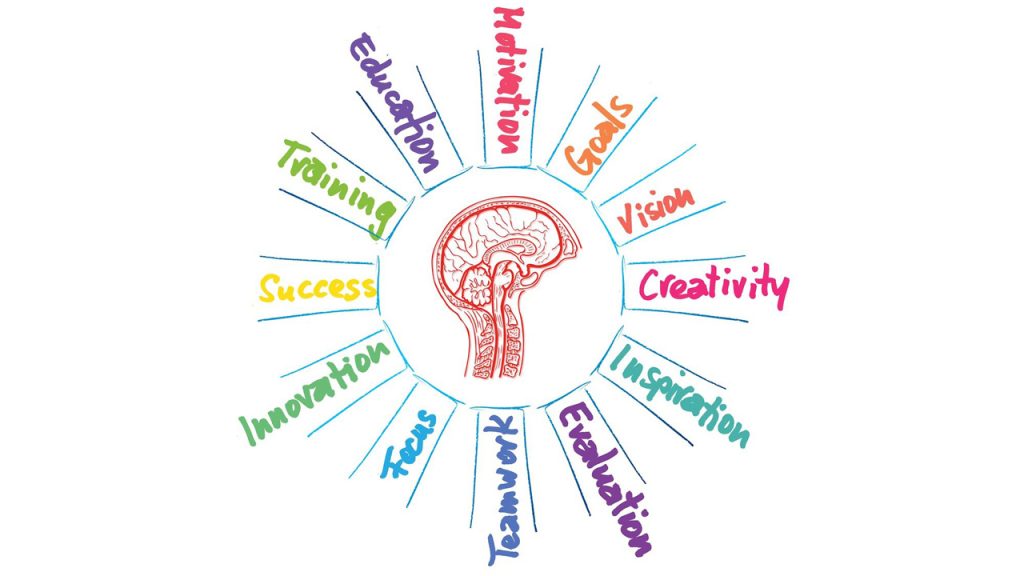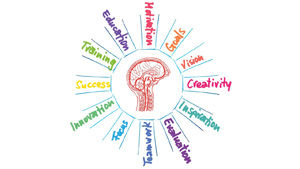Motivation is a complex concept that has been extensively studied in the field of educational psychology. Numerous theories have been proposed to explain the underlying factors that drive and sustain students’ behavior towards their educational goals. Understanding these theories is crucial for educators as they can inform instructional strategies that enhance student motivation and engagement. In this article, we will explore some of the prominent theories of motivation in educational psychology.

Photo by geralt on Pixabay
One of the most well-known theories is Maslow’s Hierarchy of Needs. According to Maslow, individuals are motivated by a hierarchy of needs, ranging from basic physiological needs to self-actualization. In an educational context, this theory suggests that students’ motivation is influenced by their need for safety, belongingness, esteem, and self-fulfillment. Educators can address these needs by creating a supportive and inclusive classroom environment that fosters positive relationships and a sense of belonging.
Another influential theory is Self-Determination Theory (SDT), which posits that human motivation is driven by the innate psychological needs for autonomy, competence, and relatedness. Autonomy refers to the desire for self-direction and control, competence is the need to feel capable and effective, and relatedness is the need for social connection and belongingness. When these needs are met, students are more likely to be intrinsically motivated and engaged in their learning.
Educators can support students’ autonomy by providing choices and opportunities for self-directed learning, facilitate competence by offering challenging yet attainable tasks, and promote relatedness through collaborative learning activities.
Cognitive Evaluation Theory (CET) is another theory that focuses on the impact of external factors on motivation. According to CET, students’ motivation is influenced by the way their achievements are evaluated. If students perceive that their accomplishments are contingent on external rewards or punishments, their intrinsic motivation may be undermined.
On the other hand, if students feel that their achievements are self-determined and reflect their own competence, their intrinsic motivation will be enhanced. Educators can foster intrinsic motivation by providing constructive feedback that focuses on effort, progress, and mastery rather than solely on grades or extrinsic rewards.
These are just a few examples of the theories that have been proposed to explain motivation in educational psychology. Each theory offers valuable insights into the various factors that influence students’ motivation to learn. By understanding these theories, educators can tailor their instructional practices to meet the diverse motivational needs of their students.
Intrinsic and Extrinsic Motivation
Motivation in educational psychology can be broadly classified into two types: intrinsic and extrinsic motivation. Understanding the distinction between these two forms of motivation is essential for educators, as they can have different effects on student engagement and achievement.
Intrinsic motivation refers to the inherent desire to engage in an activity for its own sake, without any external rewards or incentives. When students are intrinsically motivated, they are motivated by the joy of learning, the satisfaction of mastering a skill, or the sheer curiosity to explore a subject. Intrinsic motivation is considered to be the most desirable form of motivation, as it leads to higher levels of engagement, creativity, and long-term interest in learning. Educators can foster intrinsic motivation by designing learning experiences that are challenging, meaningful, and personally relevant to students’ interests and goals.
Extrinsic motivation, on the other hand, is driven by external rewards or incentives. Students who are extrinsically motivated engage in learning activities to obtain rewards, such as good grades, praise from teachers, or approval from peers. While extrinsic motivation can be effective in the short term, it may undermine students’ intrinsic motivation if overused or misapplied. Educators should be mindful of the balance between extrinsic and intrinsic motivators, ensuring that external rewards are used as a tool to support and reinforce students’ intrinsic motivation rather than replace it.
It is important to note that intrinsic and extrinsic motivation are not mutually exclusive; they can coexist and interact with each other. For example, a student may initially be motivated by extrinsic rewards, but over time, develop a genuine interest and enjoyment in the subject, leading to intrinsic motivation. Educators can leverage this dynamic by gradually shifting the focus from external rewards to fostering students’ intrinsic motivation through autonomy, competence, and relatedness.
By recognizing the different types of motivation and their impact on student engagement, educators can design instructional strategies that promote intrinsic motivation while harnessing the power of extrinsic motivators when appropriate. Creating a learning environment that nurtures both intrinsic and extrinsic motivation can maximize students’ engagement, effort, and achievement.
Role of Motivation in Student Learning
Motivation plays a crucial role in students’ learning experiences and outcomes. It influences the level of effort students put into their studies, their engagement in the learning process, and ultimately, their academic achievement. Understanding the role of motivation in student learning is essential for educators, as it can inform instructional strategies that enhance motivation and promote effective learning.
One of the key ways in which motivation impacts student learning is through the level of effort students invest in their studies. When students are motivated, they are more likely to exert effort, persist in the face of challenges, and engage in deep processing of information. On the other hand, when students lack motivation, they may exhibit a lack of effort, procrastination, and surface-level learning strategies. By fostering students’ motivation, educators can encourage them to invest the necessary effort to succeed academically.
Motivation also influences students’ engagement in the learning process. When students are motivated, they are actively involved in their learning, seeking out opportunities to explore, question, and apply their knowledge. They are more likely to participate in class discussions, ask questions, and take ownership of their learning. On the contrary, when students lack motivation, they may become disengaged, passive learners, simply going through the motions without actively processing or internalizing the information. Educators can enhance student engagement by creating a stimulating and interactive learning environment that promotes active learning, collaboration, and student-centered approaches.
Motivation has a significant impact on students’ academic achievement. Numerous studies have shown a positive correlation between motivation and academic performance. When students are motivated, they are more likely to set challenging goals, persist in the face of setbacks, and utilize effective learning strategies. In contrast, unmotivated students may struggle to achieve their full potential, as they may lack the drive and perseverance necessary for success. Educators can support students’ academic achievement by cultivating their motivation through goal-setting, providing constructive feedback, and fostering a growth mindset.
Motivation is a critical factor in student learning. By understanding the role of motivation and its impact on effort, engagement, and achievement, educators can design instructional strategies that enhance motivation and create optimal learning experiences for their students.
Factors That Influence Motivation in the Classroom
Motivation in the classroom is influenced by a multitude of factors, both internal and external. Understanding these factors is essential for educators, as they can shape students’ motivation, engagement, and overall learning experiences. In this section, we will explore some of the key factors that influence motivation in the classroom.
One of the primary factors that influence motivation is the learning environment. A supportive and stimulating learning environment can foster students’ intrinsic motivation by providing them with a sense of autonomy, competence, and relatedness. When students feel that they have control over their learning, perceive themselves as capable, and experience a sense of belongingness, they are more likely to be motivated and engaged. Educators can create such an environment by offering choices and opportunities for student autonomy, providing clear expectations and feedback, and promoting a positive and inclusive classroom culture.
The instructional strategies employed by educators also play a significant role in influencing students’ motivation. When instruction is engaging, challenging, and relevant to students’ interests and goals, it can enhance their motivation and promote deeper learning. On the other hand, monotonous, rote learning experiences can undermine students’ motivation and lead to surface-level learning. Educators should strive to make their instruction meaningful, interactive, and varied, incorporating a range of instructional methods and technologies to cater to diverse learning styles and preferences.
The quality of teacher-student relationships also has a profound impact on student motivation. When educators establish positive, caring, and supportive relationships with their students, it creates a sense of trust, belongingness, and emotional safety. Students who feel valued and respected by their teachers are more likely to be motivated, engaged, and receptive to learning. Educators can build strong relationships with their students by showing genuine interest in their well-being, providing individualized support, and creating opportunities for meaningful interactions.
The influence of peers and social factors cannot be overlooked. Peer interactions can either enhance or undermine students’ motivation, depending on the nature of the social dynamics within the classroom. Positive peer relationships, collaborative learning experiences, and opportunities for social recognition and support can boost students’ motivation and engagement.
Conversely, negative peer relationships, social comparison, and a competitive classroom culture may hinder motivation and create a hostile learning environment. Educators should promote positive peer interactions, foster a sense of belongingness, and create opportunities for collaborative learning and peer feedback.
Other factors that influence motivation in the classroom include the relevance and perceived value of the learning content, students’ self-efficacy beliefs and prior experiences, the presence of extrinsic rewards and incentives, and the alignment between students’ goals and the curriculum. By considering and addressing these factors, educators can create an environment that supports and cultivates students’ motivation, leading to enhanced engagement, effort, and achievement.
Strategies for Fostering Motivation in the Educational Setting
Fostering motivation in the educational setting is a multifaceted task that requires a combination of strategies and approaches. Educators play a crucial role in creating an environment that cultivates students’ motivation, engagement, and overall academic performance. In this section, we will explore some practical strategies that educators can employ to foster motivation in their students.
Create a supportive and inclusive learning environment
Establish a positive classroom culture that promotes respect, empathy, and inclusivity. Encourage collaboration, active participation, and open communication. Provide opportunities for student autonomy and choice, allowing them to take ownership of their learning.
Make learning meaningful and relevant
Connect the learning content to students’ interests, goals, and real-world applications. Help students understand the value and relevance of what they are learning. Incorporate authentic and problem-based learning experiences that allow students to apply their knowledge and skills in meaningful ways.
Set challenging yet attainable goals
Encourage students to set challenging goals that stretch their abilities but are still within their reach. Break down complex tasks into smaller, manageable steps. Provide clear, specific, and constructive feedback that focuses on effort, progress, and improvement.
Promote autonomy and self-directed learning
Offer choices and options within the learning process. Allow students to have some control over how they learn and demonstrate their understanding. Encourage self-reflection, self-assessment, and self-regulation. Provide opportunities for students to pursue their own interests and passions within the curriculum.
Foster positive teacher-student relationships
Build strong, trusting relationships with your students. Show genuine interest in their well-being, strengths, and challenges. Provide individualized support and encouragement. Celebrate students’ achievements and efforts, and offer guidance and assistance when needed.
Use a variety of instructional methods
Incorporate a range of instructional methods and technologies to cater to diverse learning styles and preferences. Use active learning strategies, such as group work, discussions, hands-on activities, and problem-solving. Make use of multimedia resources, online platforms, and interactive technologies to enhance engagement and interactivity.
Promote collaboration and peer support
Create opportunities for collaborative learning experiences. Encourage students to work together, share ideas, and provide peer feedback. Foster a sense of belongingness and community within the classroom.
Provide choice and relevance in assessments
Allow students to demonstrate their understanding and mastery in ways that are meaningful and relevant to them. Offer a variety of assessment formats, such as projects, presentations, portfolios, and performance-based assessments. Provide timely and constructive feedback that focuses on growth and improvement.
Celebrate achievements and progress
Recognize and celebrate students’ achievements, both big and small. Create a culture of appreciation and recognition. Showcase students’ work and accomplishments to inspire and motivate others.
Promote a growth mindset
Encourage students to embrace challenges, view mistakes as learning opportunities, and believe in their capacity to grow and improve. Cultivate a classroom culture that values effort, perseverance, and resilience.
By implementing these strategies, educators can create a motivating and engaging learning environment that fosters students’ intrinsic motivation, effort, and achievement. Remember that every student is unique, and it is essential to tailor these strategies to meet the diverse motivational needs of your students.
Impact of Motivation on Academic Performance
Motivation has a profound impact on students’ academic performance. Numerous studies have shown a positive correlation between motivation and achievement, highlighting the crucial role of motivation in shaping students’ learning outcomes. In this section, we will explore the ways in which motivation influences academic performance.
One of the key ways in which motivation impacts academic performance is by influencing the level of effort students invest in their studies. When students are motivated, they are more likely to exert effort, persist in the face of challenges, and engage in deep processing of information. Motivated students are willing to put in the necessary time and energy to understand complex concepts, practice skills, and complete assignments to the best of their abilities. As a result, they are more likely to achieve higher grades, demonstrate greater mastery of the subject matter, and perform well on assessments.
Motivation also affects students’ engagement in the learning process, which, in turn, impacts academic performance. When students are motivated, they actively participate in class discussions, ask questions, and seek out additional learning opportunities. They are more likely to attend classes regularly, complete assignments on time, and take advantage of resources and support available to them. This high level of engagement promotes deep learning, critical thinking, and the development of higher-order cognitive skills, all of which contribute to improved academic performance.
Motivated students are more likely to adopt effective learning strategies that enhance their understanding and retention of information. They engage in self-regulated learning behaviors, such as setting goals, planning their study time, monitoring their progress, and seeking feedback.
These strategies enable them to optimize their learning experiences, leading to better comprehension, application, and mastery of the content. In contrast, unmotivated students may rely on passive learning strategies, such as memorization or rote learning, which are less effective in promoting deep understanding and long-term retention.
Conclusion
Motivation is a complex concept in educational psychology that influences students’ behavior and engagement in the learning process. Various theories, such as Maslow’s Hierarchy of Needs, Self-Determination Theory, and Cognitive Evaluation Theory, offer valuable insights into the factors that drive and sustain student motivation. Educators can enhance motivation by creating a supportive and inclusive classroom environment, addressing students’ needs for autonomy, competence, and relatedness, and providing constructive feedback that focuses on effort and mastery.
Understanding the distinction between intrinsic and extrinsic motivation is crucial, as both types can impact student engagement and achievement. By fostering intrinsic motivation and using extrinsic motivators as tools to support it, educators can create a learning environment that maximizes students’ engagement, effort, and academic success. Ultimately, recognizing the role of motivation in student learning allows educators to design effective instructional strategies that enhance motivation and promote optimal learning outcomes.




